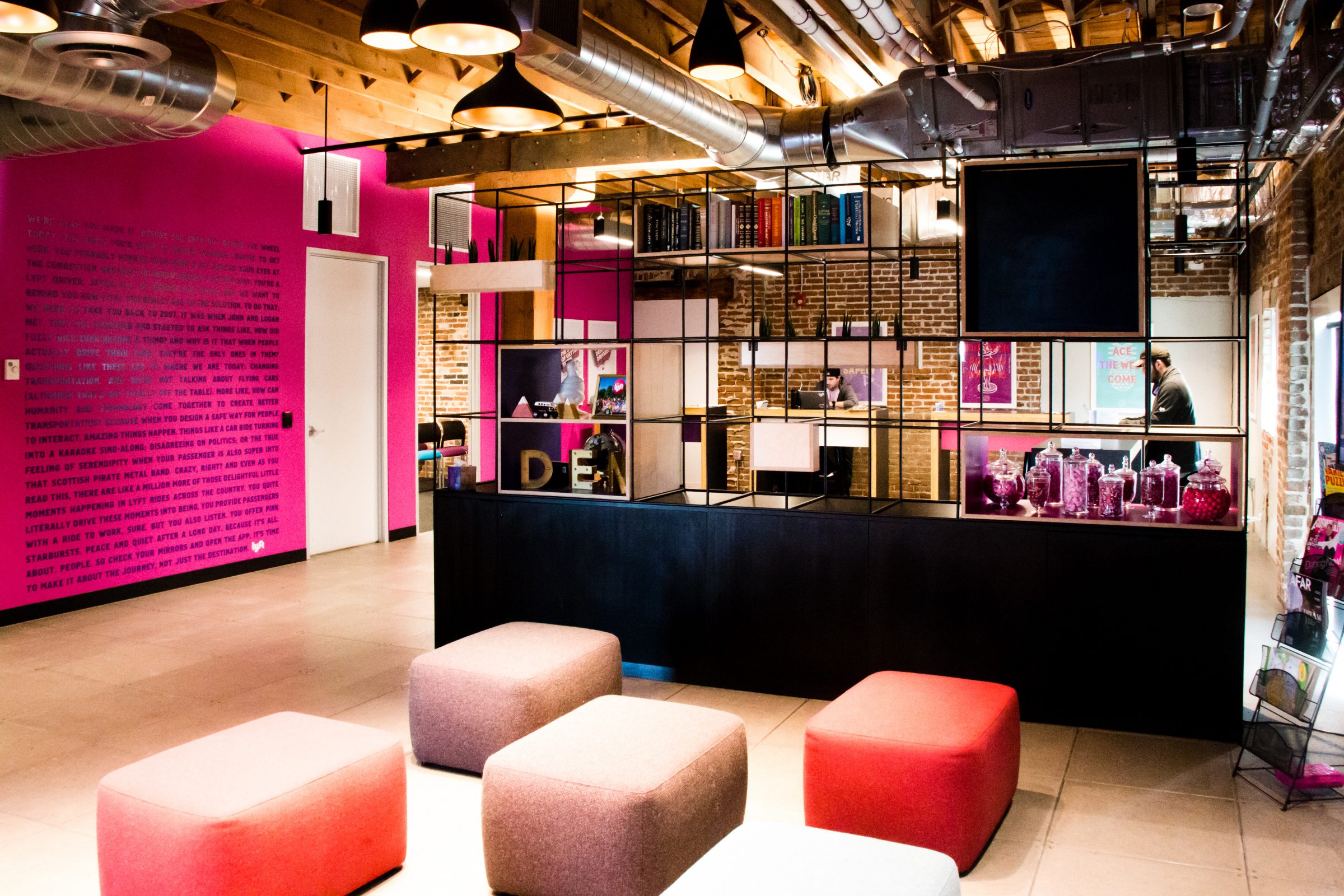You’ve gone from being a fledgling startup to a full-fledged business owner. Your client list is growing by the day, maybe you’ve received your first round of funding, and it’s not just you and your dog in the basement anymore. You know you need an office to house your growing team, but deciding how much to spend and the best office space for you has probably left you with a lot more questions than answers.
With their growth in popularity, coworking spaces can seem like an obvious choice, but don’t sell your office selection process short. These super-flexible spaces can be great options in the interim, but there will come a time when you’ll need to consider all of your options for both financial and practical reasons.
Ultimately, you need a space that will allow you to maintain operational flexibility through each stage of growth, reflect your brand, and support, attract and retain top talent – all while keeping spending in check.
Take Lyft, for example. We worked with the ridesharing giant’s local team to find a traditional office space in STEAM on the Platte that meets both their current and future needs. Located in a hot spot for development, their new offices keep them in the heart of the action to continue growing their operations in the Mile High City.
But how do you know if you’re getting the best lease terms and amenities? How much space should you allocate for each employee (while also planning for growth)? And how can you minimize your operating and capital expenditures?
Having worked with businesses in every phase of development, our expert team at Tributary Real Estate is here to walk you through the process. Here are some questions worth asking before making an office investment at any stage:
The Seed Stage (5-20 employees)
Priority in this phase should be maximizing flexibility, and finding a location that will help you recruit and retain top talent.
- Will the landlord cover tenant improvements?
- Are there options to expand the space?
- What is the expected length of term?
- Is furniture included? Is it easy for plug & play flexibility?
- What kind of IT connectivity support do I need?
- What kind of financial security will be required to secure the lease?
The Early Stage (20-40 employees)
Priority again in this phase should be maximizing flexibility (sensing a theme?) and continuing to focus on a location that will help you recruit and retain top talent.
- How can I minimize operating and capital expenditures?
- What lease terms are optimal?
- What public transportation options are available?
- Is there an option to sublet?
- How do I plan for growth?
The Growth Stage (40-200 employees)
Priority in this phase is utilizing the office space to establish your brand, leverage your more secure financial situation, and continue to maximize flexibility, recruitment and retention.
- How do I build flexibility into my lease?
- What can I leverage for optimal lease negotiations?
- How can the space enhance the image and culture of my business?
- What is the expected security deposit?
The Mature Stage (200+ employees)
Priority is establishing a longer-term solution for your office needs. Do you see yourself in this space for the next 5 to 10 years?
- Is it smarter to own or lease my space?
- Is the tenant landscape competitive?
- How can my space help attract and retain top talent?
- How does this space support and build my infrastructure?
- What is the scalability in my building submarket?
Before you over-spend or lock yourself into a lease, protect your office investment by working with a professional who gets it. From your first desk to your first headquarters, we’re here to provide insight and assistance to help you ask the right questions and find the best space for your needs and your budget.
Image: Lyft’s New Denver Office in STEAM on the Platte


